TUTORIALS TO BE HELD IN CONJUNCTION WITH IEEE
INTERNATIONAL CONFERENCE ON ADVANCED NETWORKS AND TELECOMMUNICATIONS SYSTEMS
(ANTS 2018)
Session 1 – Tutorial T1:
Time: 16 December 2018, 09.30 AM to 01.00 PM
“Road Communication Using Visible Light…….Road Ahead”
Abstract: In the context of an increasing interest toward reducing the number of traffic accidents and of associated victims, communication-based vehicle safety applications have emerged as one of the best solutions to enhance road safety. In this area, visible light communications (VLC) have a great potential for applications due to their relatively simple design for basic functioning, efficiency, and large geographical distribution. This tutorial addresses the issues related to the VLC usage in vehicular communication applications. Although VLC has been the focus of an intensive research during the last few years, the technology is still in its infancy and requires continuous efforts to overcome the current challenges, especially in outdoor applications, such as the automotive communications. This tutorial is aimed at providing an overview of several research directions that could transform VLC into a reliable component of the transportation infrastructure. The main challenges are identified and the status of the accomplishments in each direction is presented, helping audience to understand what has been done, where the technology stands and what is still missing.
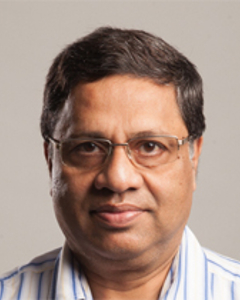 Speaker: Dr.Anand Srivastava, Dean and Professor, Electronics & Communication Engineering, IIIT- Delhi.
Speaker: Dr.Anand Srivastava, Dean and Professor, Electronics & Communication Engineering, IIIT- Delhi.
Bio: Dr.Anand Srivastava did his M.Tech. and Ph.D. from IIT Delhi. Before joining IIIT Delhi, he was Dean & Professor in School of Computing and Electrical Engineering at Indian Institute of Technology Mandi, HP, India and also Adjunct Professor at IIT Delhi. Prior to this, he was with Alcatel-Lucent-Bell Labs, India as solution architect for access and core networks. Before joining Alcatel Lucent, he had a long stint (∼ 20 years) with Center for Development of Telematics (C-DOT), a telecom research center of Govt. of India where he was Director and Member of C-DOT Board. During his stay in C-DOT, he provided technical leadership and motivation to extremely qualified team of about 150+ engineers engaged in the development of national level projects in the areas of Telecom Security Systems, Network Management System, Intelligent Networks, Operations Support Systems, Access Networks (GPON) and Optical Technology based products. Majority of these projects were completed successfully and commercially deployed in the public network. He was also closely involved with ITU-T, Geneva in Study Group 15 and represented India for various optical networking standards meetings. His research work is in the area of optical core & access networks, Fiber-Wireless (FiWi) architectures, optical signal processing, Visible light communications (VLC) and energy aware optical networks.
Session 1 – Tutorial T2:
Time: 16 December 2018, 09.30 AM to 01.00 PM
“Machine Learning and other Approaches to the truthfulness of information on Online Social Networks”
Abstract: One of the most important inventions on top of the Application Layer of computer networking is the concept of Online Social Networks (OSN). There are hundreds of Social Networking websites online, such as Facebook and Twitter, serving the basic need of human beings to connect. Many people have made news on OSN and sprang to instantaneous fame. OSNs have proven to play a crucial role when there are calamities by contributing to the situational awareness at the affected locations. However, in spite of their largely humanitarian role, OSNs have been subject to substantial abuse. Given the power the OSNs command, many have used them with an intention to perpetuate lies, causing substantial damage.
The tutorial will examine some of the approaches that can be taken to solve the problem of falsehood on OSNs and the Web in general. The tutorial is planned to be predominantly based on the book the instructor authored titled, “Veracity of Big Data using Machine Learning and other techniques,” available at https://www.springer.com/us/book/9781484236321 and major libraries, including those of MIT, Harvard, Stanford, CMU, and internationally. The material will be covered without assuming a lot of math / technical background, so should be easy to understand to anyone who is interested in these topics. The tutorial is planned to be useful to both professors / students, particularly those engaged in research and practitioners from the industry alike.
 Speaker: Dr. Vishnu S. Pendyala, Technical Leader, Cisco Systems Inc., San Jose, California, USA
Speaker: Dr. Vishnu S. Pendyala, Technical Leader, Cisco Systems Inc., San Jose, California, USA
Bio: Dr. Vishnu S. Pendyala is a seasoned Technical Leader with over two decades of development, porting, and DevOps experience in the software industry. He graduated with a PhD in Computer Engineering from Santa Clara University. He also holds MBA(Finance), MS(Comp Eng), and BE(CSE) degrees from Indian and US universities. He served as a repeat technical paper reviewer for professional journals and conferences, including the IEEE Computer, the annual IEEE International Conference on E-Commerce from 2003 – 2007, and thirty others over the years. He is a frequent speaker and delivered keynotes and invited talks in international conferences. Dr. Pendyala taught a one-week course sponsored by the Ministry of Human Resource Development (MHRD), GoI under the GIAN program last year. He is on the executive council of CSI SIGDBA and is the founding editor of its flagship publication, Visleshana. He is currently serving on the board of directors of Silicon Valley Engineering Council. He received the Ramanujam memorial gold medal at State Math Olympiad and has been a successful leader during his undergrad years. More about him at https://www.linkedin.com/in/pendyala/.
Session 2 – Tutorial T3:
Time: 16 December 2018, 02.00 PM to 05.30 PM
“Deep learning and its Applications to Wireless Communications”
Abstract: Today, wireless networking, Internet, and Internet enabled devices have widely profused in our everyday life. As a consequence, there is huge data communication burden and resource utilization in wireless communication networks. For example, it has been reported the annual worldwide IP traffic consumption will reach 3.3 zettabytes (270 bytes) by 2021. In particular, mobility of devices, heavy exchange of multimedia data, and sharing of channels by multiple users add challenges in terms of reliable estimation of channels, reliable communication, reducing end-to-end delays in communication etc. Systems are being designed for handling heterogeneous architectures to meet the end-user requirements and quality of service in the 5th generation of mobile systems (5G). The growing complexity in wireless architectures, abundance of data required to be transmitted, and the recent developments in deep learning (DL) and artificial intelligence (AI) has provided impetus to the use of AI and DL in communication engineering. The trend is seen with application of multilayer perceptron and convolutional neural networks for channel estimation in OFDM and massive MIMO, symbol detection and decoding in non-orthogonal multiple access for 5G networks, sparse code multiple access (SCMA), and reinforcement learning for coverage and capacity optimization in massive MIMO.
This tutorial is aimed at introducing the basics of deep learning and to familiarize the audience with the research problems in communication engineering, particularly 5G that are being solved or can be solved using deep learning. The tutorial will be covered in two parts. The first part will begin with a brief introduction of machine learning and the emergence of deep learning, followed by discussion on deep belief networks, autoencoders, convolutional neural networks, and recurrent neural networks. In the second part, we will briefly look at the recent research literature and applicability of deep learning for wireless communication problems.
.
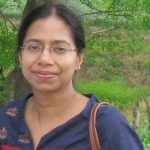 Speaker 1: Dr. Anubha Gupta, Associate Professor, IIIT-Delhi.
Speaker 1: Dr. Anubha Gupta, Associate Professor, IIIT-Delhi.
Bio: Dr.Anubha Gupta (anubha@iiitd.ac.in) received her B.Tech and M.Tech from Delhi University, India in 1991 and 1997 in Electronics and Communication Engineering. She received her PhD. from Indian Institute of Technology (IIT), Delhi, India in 2006 in Electrical Engineering. She did her second Master’s as a full time student from the University of Maryland, College Park, USA from 2008-2010 in Education with concentration: Higher Education Leadership and Policy Studies. She worked as Assistant Director with the Ministry of Information and Broadcasting, Govt. of India (through Indian Engineering Services) from 1993 to 1999 and, as faculty at NSIT-Delhi (2000-2008) and IIIT-Hyderabad (2011-2013), India. Since Dec. 2013, she is working as Associate Professor at IIIT-Delhi. She has author/co-authored over 80 technical papers in peer reviewed scientific journals and conferences. She has also filed 4 patents. She has published research papers in both engineering and education. Her research interests include signal processing for communication engineering, biomedical signal and image processing including fMRI, MRI, EEG, ECG signal processing, genomics signal processing in cancer research, Wavelets in deep learning, Dr. Gupta is a senior member of IEEE Signal processing Society and a member of IEEE Women in Engineering Society. She is Associate Editor of IEEE Access journal.
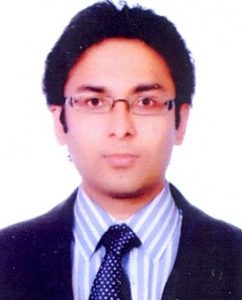 Speaker 2: Dr.Vimal Bhatia, Professor, IIT, Indore.
Speaker 2: Dr.Vimal Bhatia, Professor, IIT, Indore.
Bio: Dr.Vimal Bhatia (vbhatia@iiti.ac.in) received Ph.D. from Institute for Digital Communications at The University of Edinburgh (UoE), UK in 2005. He has worked for telecommunication and new media companies for over 13 years in both the UK and India. He is currently working as a Professor with Indian Institute of Technology (IIT) Indore, India. He has author/co-authored over 130-technical papers in peer reviewed scientific journals and conferences. He also has filed 11 patents of which 6 patents have been granted. As co-author he has received the best paper awards in OSA and IEEE conferences, and is awarded Young Faculty Research Fellowship from Ministry of Electronics and Information Technology, India. Dr. Bhatia’s research interests are in statistical and adaptive signal processing, and wireless communications for 5G and beyond systems. He is serving as an Editor for IETE Technical Review and is reviewer for IEEE, OSA, Elsevier, and Springer. He is also a certified SCRUM Master, General vice-Chair and General Chair of IEEE ANTS 2017 and 2018 respectively. He is also faculty convenor for Centre for Innovation and Entrepreneurship which comprises of Industry Relations, Student Entrepreneurship Support Cell, ENACTUS, DST-Innovation and Entrepreneurship development Centre and have been organising i5summit (with IIM Indore), and Industry-Academia Conclave-2017.
Session 2 – Tutorial T4:
Time: 16 December 2018, 02.00 PM to 05.30 PM
” Complex Networks: A Networking Perspective”
Abstract: Networks obtained by modeling real-world physical systems result in a complex interconnection of nodes (vertices) by edges (links or arcs). Study of complex networks, also known as network science, is important due to the fact that complex networks appear in many aspects of our life such as biological networks, molecular networks, social networks, transportation networks, electric power grids, communication networks, and the Internet. In fact, most physical and biological systems often behave as complex networks of subsystems and connectivities among them. As computing-, communication-, and physical-systems become more and more complicated, analyzing topological and other related characteristics turn out to be extremely challenging. Complex network analysis provides a means to model, characterize, and understand many such complex physical-world systems and their characteristics.
This tutorial is an effort towards understanding the networking aspect of complex networks and discusses the current state of the research. Further, recent applications of complex network analysis in the emerging fields of wireless mesh networks, wireless sensor networks, and other wireless networks will be emphasized. A collection of open research problems will be highlighted as well.
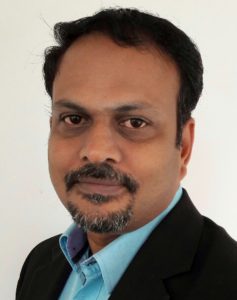 Speaker 1: Dr.B. S. Manoj, Professor and Head, Department of Avionics, Indian Institute of Space Science and Technology, Thiruvananthapuram
Speaker 1: Dr.B. S. Manoj, Professor and Head, Department of Avionics, Indian Institute of Space Science and Technology, Thiruvananthapuram
Bio: Dr.B. S. Manoj (bsmanoj@ieee.org) is currently Professor and Head of the Department of Avionics, Indian Institute of Space Science and Technology (IIST), Thiruvananthapuram, India. He worked as Associate Professor at IIST from 2011 to 2016 at the Department of Avionics, IIST. Manoj received his PhD in Computer Science and Engineering from Indian Institute of Technology (IIT) Madras in 2004. He worked as a Senior Engineer with Banyan Networks Pvt. Ltd., Chennai, India from 1998 to 2000. From January 2004 to January 2005, he was a Project Officer at IIT Madras, India. From January 2005 to January 2011, he was at the University of California, San Diego, USA, working initially as a Post Doctoral Researcher and later as an Assistant Research Scientist and Lecturer.
He co-authored two textbooks, Ad Hoc Wireless Networks: Architectures and Protocols, (Prentice Hall, 2004) and Complex Networks: A Networking and Signal Processing Perspective, (Prentice Hall, 2018). He has to his credit more than 140 publications, which include 9 textbook chapters, 35 international journal publications, more than 96 international conference/workshop publications, and 7 Indian national conferences. Among his other published works, his co-authored papers in SPCOM 2016, IEEE CCNC 2008, HiPC 2004, and IRISS 2002 bagged the best paper awards. He also received the IEEE International Conference on Natural Computation (ICNC) Outstanding Leadership award in 2015, the IBM Outstanding PhD Student/Thesis award for the year 2004, and the ISCA (Indian Science Congress Association) Young Scientist Award for the year 2003. His current research interests include complex networks, cybersecurity, cognitive networks, ad hoc wireless networks, wireless mesh networks, software-defined networks, delay tolerant networks, and wireless sensor networks.
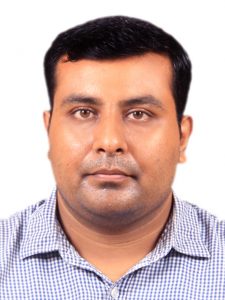 Speaker 2: Dr.Abhishek Chakraborty, Institute Post Doctoral Fellow, Indian Institute of Technology Madras, Chennai, India.
Speaker 2: Dr.Abhishek Chakraborty, Institute Post Doctoral Fellow, Indian Institute of Technology Madras, Chennai, India.
Bio: Dr.Abhishek Chakraborty (abhishek2003slg@ieee.org) completed PhD in 2018 from Indian Institute of Space Science and Technology (IIST), Thiruvananthapuram, India, where he focused on understanding the evolution of finite-sized complex networks and applying the observations to design efficient communication and transportation networks. He is currently an Institute Post Doctoral Fellow in the Department of Computer Science and Engineering at Indian Institute of Technology Madras, India. Prior to that, he was a Senior Project Fellow at the Department of Avionics, IIST. He also worked as a Programmer Analyst with Cognizant Inc., Kolkata, India from 2007 to 2009. During 2012 – 2013, he served as the IEEE Student Branch Chair at IIST. He co-authored a textbook, Complex Networks: A Networking and Signal Processing Perspective, (Prentice Hall, 2018). Apart from that, one of his co-authored publications titled “Graph Fourier transform based on directed Laplacian” was selected for the Springer Best Student Paper award at the 11th International Conference on Signal Processing and Communications (SPCOM) 2016, Bangalore, India. His current research interests include network science, complex networks, wireless mesh networks, wireless sensor networks, and 5G communications networks.
TUTORIAL CO-CHAIRS:
- Subhankar Dhar, San Jose State University, USA – subhankar.dhar@sjsu.edu
- Vivek Bohara, IIIT Delhi, India – vivek.b@iiitd.ac.in
- Tripti Swarnkar, India – swarnkar.tripti@gmail.com
*Date & Times are Tentative.


